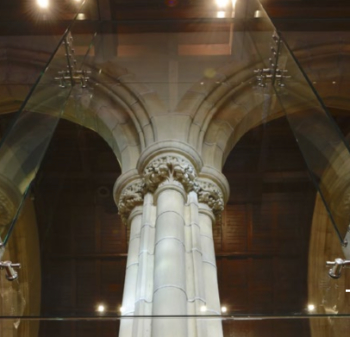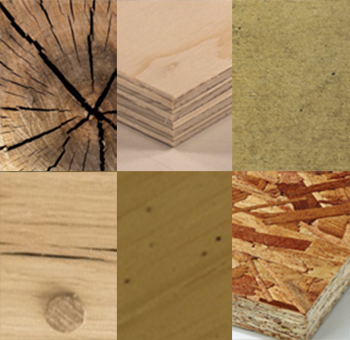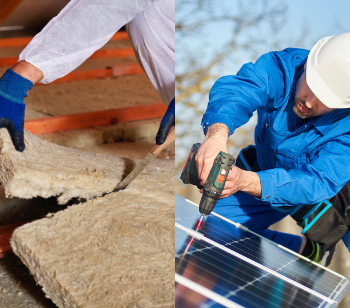Construction drones
Contents |
[edit] Drone terminology
The general term 'drone' refers to robotic vehicles. However, it has come to be associated more specifically with unmanned aerial vehicles (UAV). Unmanned aerial vehicles cane be:
- Remotely piloted aircraft (RPA) controlled from the ground.
- Autonomously controlled by on-board computers.
- Pre-programmed to fly specified routes.
They range in size from full-scale aeroplanes or helicopters, to small hand-held vehicles similar to the model aircraft used for recreational purposes. Drones are widely known for their use in military operations, but as the cost of the technology required has fallen, they have been developed for a number of civil applications such as; film making, surveying, crop spraying, and so on. In the construction industry they can give relatively easy access to large or difficult sites or to large, complex or tall structures.
[edit] Drone tasks
They can gather aerial data, mapping information and images that can be used for:
- Surveys.
- Inspections.
- Providing visual material for clients and other stakeholders.
- Monitoring activities on site.
- Security surveillance.
- Mapping data across sites.
Their set up costs are generally low compared with full LIDAR surveys, or the use of cherry pickers or scaffolding to access difficult areas, and they can gather information over a wide area and from a variety of viewpoints. They can also be faster than other methods and can reduce safety risks.
Drones can be operated remotely from safe areas several hundred meters away from construction works, as long as the pilot has a clear line of sight of the flying zone. Small drones can be transported in a case, set up quickly and can gather high-resolution information and continuous footage. The pilot is given a real-time view on a remote monitor and can manoeuvre the drone and zoom in to obtain additional information where issues are identified during flight.
Drones can return and land automatically in the event of problems occurring, and have can be shut down in emergency situations. If required, they can be programmed to take-off, follow a flight path, perform specific tasks at defined locations and auto land. Information gathered can be automatically uploaded to the cloud and viewed on tablets by the project team. However, there are dangers associated with flying aircraft, as well as public concerns about privacy.
In addition, drones have limited payload and may be difficult to operate in poor weather conditions, or where there is poor visibility.
[edit] Codes and supporting bodies
The Civil Aviation Authority publish regular updates The Drone and Model Aircraft Code yearly for further information visit https://register-drones.caa.co.uk/drone-code/updates
More specifically towards construction, COMIT was formed in 2003, as a community to promote information technology in the construction industry, In 2018, the C2D (or COMIT2Drones) group was created as a specific special interest group focussing on the UK's drone sector for Construction and Infrastructure. Today the community boasts some of the UK’s leading organisations and businesses in this sector, all working together. For further information visit https://c2d.uk/
[edit] General updates
In is clear to many bodies today that the data from drones can be hugely valuable in construction. From surveying land to inspecting infrastructure, using drones offers greater accuracy and quicker access to insights than traditional methods. But it also generates a vast quantity of data and, of course, that presents challenges. One of the most significant developments in construction relevant technology has been the rapid advancements in machine learning and AI. AI combined with drone data has capabilities that can help architects, surveyors, contractors and many other sectors that handle large volumes of data, to access insights and improve business outcomes. Below are some of general updates on a yearly basis, they are not definitive and if significant policy or industry changes are missing, feel free to add these here.
[edit] Update 2023
In March 2023, the Biometrics and Surveillance Camera Commissioner wrote to all 47 police forces in England and Wales, seeking to clarify and develop the picture of the uncrewed aerial vehicles (UAVs) or ‘drones’ used by policing and law enforcement in England and Wales. This followed the publication of the Commissioner’s 2022 survey of police use of overt surveillance camera systems in public places, where a general overview of use of UAVs was initially identified. The findings were based on the returns of 34 forces across England and Wales and can be found here.
At the Global Investment Summit in 2023 the Science and Tech Secretary, annouced plans to revamp the regulatory environment around key technologies 'stripping back red tape to unleash innovation in clean aviation, drones and autonomous marine tech'.
[edit] Update 2022
In July 2022 the UK government set out an ambition statement and vision for commercial drones, created jointly by government and the sector, outlining the 2030 potential, current use cases and support and enablers for the future. The Policy paper "Advancing airborne autonomy: use of commercial drones in the UK". The paper outlines the huge potential for drones, which was estimated could be worth £45 billion to the UK economy by 2030: see Skies without Limits 2.0. It sets out a range of examples of how drones are already being effectively deployed and outlines how key enablers in technology, regulation, funding, business support and public perception will be realised. The document targets potential users of commercial drone solutions and aims to inspire new investment into the sector and more widespread end-user uptake of UK commercial drone capabilities. In particular relating to construction it highlights:
- BVLOS Operations Forum, convened by NATS in 2021, bringing together UK commercial drone operators and industry stakeholders aspiring for safe, reliable BVLOS operations. The Forum aims to facilitate collaboration on safety, to define and deliver implementable solutions as we move to autonomous, longer distance flight.
- COMIT2drones delivers tangible projects for infrastructure and construction companies operating drone technology, for example demonstrating how drones can best be used for aerial survey, and how to optimise usable data.
The report highlights the uses of drones for emergency services, police and search and rescue in parrticular relating to dealing with localised flooding issues. It also highlights the use of drones for asset inspection, giving the examples of Renfrewshire Council, for regular façade and roof inspections aand Sellafield in reducing risks to humans at the UK’s most secure sites. Drones provide essential monitoring, survey and surveillance for the UK’s national infrastructure and other asset owners, from building managers ensuring roofs and cladding are sound to industrial site owners ensuring emissions and operations are as expected, perimeters are secure and employees safe.
[edit] Update 2021
On 1 January 2021 the rules changed when new EU regulations governing the use of drones came into force in the UK and across Europe. Developed by the European Union Aviation Safety Agency (EASA), these new regulations adopted a risked-based approach, no longer distinguishing between leisure and commercial drone activities. Anyone flying a drone commercially must still obtain a ‘permission’ for commercial operations from the CAA by passing a theory and flight test. As part of the process, an operations manual must also be developed and approved by the CAA, detailing every aspect of the proposed drone operation, including risk assessment, insurance, maintenance and their safe flying within the required visual line of sight limits.
Ref 'Using drones for inspection and survey' in Context 168, published by the Institute of Historic Building Conservation (IHBC) in June 2021, written by Paul Bryan.
[edit] Update 2018
In 2018, the C2D (or COMIT2Drones) group was created as a specific special interest group focussing on the UK's drone sector for Construction and Infrastructure. Today the community boasts some of the UK’s leading organisations and businesses in this sector, all working together. For further information visit https://c2d.uk/
[edit] Update 2017
In July 2017, the government announced plans to introduce new regulations aimed at improving safety and security surrounding drone use. According to the new regulations, drones weighing more than 250 g will have to be registered, and users made to take a safety awareness test to demonstrate an understanding of safety and privacy laws. The move has been prompted by reports of 22 near-miss incidents involving commercial airliners and drones in the first four months of 2017. The government also plans to expand the use of geo-fencing. This uses GPS coordinates and programmes drones not to enter certain locations which are restricted, such as prisons or airports.
[edit] Update 2015
Experiments are also underway to see whether construction work itself might be possible with drones, for example, placing objects in difficult to access locations, positioning and fixing cables and so on. However, this is likely to be restricted in the short term by the weight that affordable drones are able to carry. In August 2015, MIT Technology Review reported that drones were being used on the construction of the Sacramento Kings' stadium in California. Drone footage of progress on site was converted into a 3D model that could be compared to digital drawings to identify where progress was behind programme.
[edit] Update 2010
In 2010, the Civil Aviation Authority (CAA) introduced regulations for '…the operation of small unmanned aircraft used for aerial work purposes and those equipped for data acquisition and/or surveillance'. Certain sizes of vehicle must be registered, and where a flight is proposed within a congested area or in proximity to people or property permission must be obtained from the CAA. The CAA require that operators demonstrate piloting competence and that they have considered safety implications before permission is issued. This may involve a risk assessment for a one-off flight or submission of operating manuals for regular operators. Insurance is also required. (Ref. CAA.) Some larger construction companies have made significant investment in construction drones, with the intention of having multiple drones continually flying over sites monitoring safety and tracking construction progress.
They might also include additional sensing capabilities such as; ultrasonic sensors for avoiding collisions, LiDAR capability, infrared scanners, temperature sensors, air quality detectors, radiation monitors, and so on. Mike Lewis, Bechtel's manager of construction, said: “This technology helps improve safety and quality of project delivery by providing real-time data and analysis to project teams so they can act in a timely manner.” (Ref. Global Construction Review 8 April 2015.)
[edit] Related articles on Designing Buildings
- 3D city model.
- 3D concrete printer
- 3D printer.
- Construction cameras.
- Building information modelling.
- ConTech.
- Drones as a Service DaaS.
- Drone data at the edge: three steps to better AI insights.
- Drone regulations and safety.
- Global positioning systems and global navigation satellite systems.
- Ground control point GCP.
- Ground sample distance GSD.
- How can drones transform construction processes?
- Interferometric synthetic aperture radar InSAR.
- Interview with David Southam about laser scanning in construction.
- Laser.
- LIDAR.
- Mitie - drone pest control inspection.
- Paint by drone.
- Pixel.
- Post processed kinematic PPK.
- Prefabrication.
- Printing 3D models of buildings.
- Real time kinematic RTK.
- Site information.
- Site surveys.
- Surveyor.
- The use of drones in the construction of Crossrail.
- TruVision.
- Unmanned aerial system.
- Uses of drones in construction.
- Using drones for inspection and survey.
- Using satellite imagery to monitor movements in megaprojects.
Featured articles and news
Focussing on the practical implementation of electrification.
Sustainable Urban Drainage and Biodiversity
Awards for champions of these interconnected fields now open.
Microcosm of biodiversity in balconies and containers
Minor design adaptations for considerable biodiversity benefit.
CIOB student competitive construction challenge Ireland
Inspiring a new wave of Irish construction professionals.
Challenges of the net zero transition in Scotland
Skills shortage and ageing workforce hampering Scottish transition to net zero.
Private rental sector, living standards and fuel poverty
Report from the NRH in partnership with Impact on Urban Health.
.Cold chain condensing units market update
Tracking the evolution of commercial refrigeration unit markets.
Attending a conservation training course, personal account
The benefits of further learning for professsionals.
Restoring Alexander Pope's grotto
The only surviving part of his villa in Twickenham.
International Women's Day 8 March, 2025
Accelerating Action for For ALL Women and Girls: Rights. Equality. Empowerment.
Lack of construction careers advice threatens housing targets
CIOB warning on Government plans to accelerate housebuilding and development.
Shelter from the storm in Ukraine
Ukraine’s architects paving the path to recovery.
BSRIA market intelligence division key appointment
Lisa Wiltshire to lead rapidly growing Market Intelligence division.
A blueprint for construction’s sustainability efforts
Practical steps to achieve the United Nations Sustainable Development Goals.
Timber in Construction Roadmap
Ambitious plans from the Government to increase the use of timber in construction.
ECA digital series unveils road to net-zero.
Retrofit and Decarbonisation framework N9 launched
Aligned with LHCPG social value strategy and the Gold Standard.
























Comments
[edit] To make a comment about this article, or to suggest changes, click 'Add a comment' above. Separate your comments from any existing comments by inserting a horizontal line.